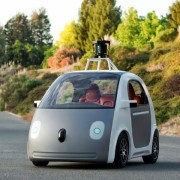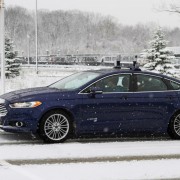VTTI Report: Self-Driving Cars Have Lower Crash Rates Than Conventional Cars
Jennifer van der Kleut
A new study by the Virginia Tech Transportation Institute (VTTI) declares what many have long suspected would be true-that self-driving cars have lower crash rates than conventional, human-driven cars.
Interestingly (but not surprisingly), the VTTI study was commissioned by Google, though the study’s authors say the findings are solely those of the institute.
As to how the study was conducted: “The report examines national crash data and data from naturalistic driving studies that closely monitors the on-road experience of 3,300 vehicles driving more than 34 million vehicle miles, to better estimate existing crash rates, and then compares the results to data from Google’s Self-Driving Car program.”
According to the report, self-driving cars have a rate of 3.2 crashes per million of miles, where traditional human-driven cars have a rate of 4.2 crashes per million miles. The study reportedly adjusted the data for unreported crashes, and takes into account the severity of the accidents.
Industry followers and news outlets alike have been closely following Google’s reporting of around 17 accidents involving its self-driving test cars in Silicon Valley, and just in the past week, the company’s report of the few hundred times a human passenger in one of their test cars had to suddenly take over control of the vehicle for safety reasons.
Early news outlets picking up on the report are already debating the study’s ultimate conclusions.
As Insurance Journal says, “The [study’s] authors note that the data also suggest that conventional vehicles may have higher rates of more severe crashes than self-driving cars, but there is insufficient data to draw this conclusion with strong confidence, given the small overall number of crashes for the self-driving cars.”
In truth, only one of Google’s roughly 17 accidents involved any reported injuries. That crash reportedly involved minor whiplash for the Google employees in the vehicle, and after being evaluated at a hospital, they were cleared to return to work. The driver of the other car also reported minor back and neck pain.
The study’s authors assert that there is “statistically-significant data that suggest less severe events may happen at significantly lower rates for self-driving cars” than conventional vehicles.
Insurance Journal also points out a January 2015 report by University of Michigan and the Sustainable Worldwide Transportation consortium of researchers, which said that “It is not clear that a self-driving vehicle would ever perform more safely than an experienced, middle-aged driver, and during the transition period when conventional and self-driving vehicles would share the road, safety might actually worsen.”
Another point many parties have brought up is that early data is not truly representative of the situation because self-driving cars have not yet been tested in varying weather conditions.
It has been less than two months since Ford began testing its self-driving prototypes in Michigan’s fierce winter weather, including snow and ice, at the Mcity testing grounds. Early findings from those tests have been positive, and Ford executives say the cars have been performing well in such conditions.


